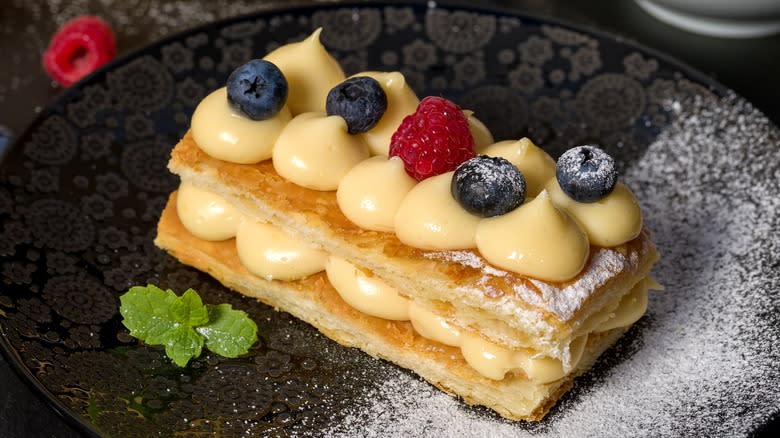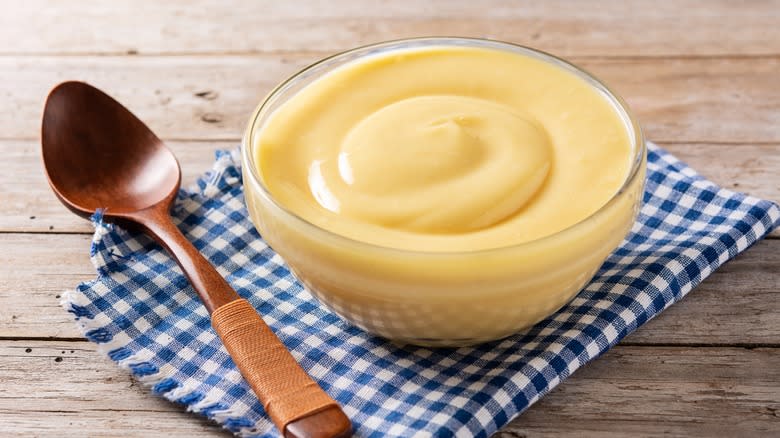The Ice Cube Tip You Need When Making Custard For Desserts

Cold vanilla-scented custard is a key ingredient in a myriad of decadent desserts, puddings, and pastries, such as mille-feuille, filled doughnuts, and profiteroles. However, making these custard-based desserts at home can be a lengthy process because you have to consider the amount of time the custard needs to cool after it's been prepared. Unlike puddings that call for lashings of hot crème anglaise, such as apple crumble, desserts made with cold custard tend to be assembled in stages to account for this extra time. Luckily there's a simple way to eliminate this annoying cooling period: All you need is a large bowl full of ice cubes and a spoon for stirring.
Dunking your hot pan of custard in a bowl of ice might sound like a faff but it can be helpful if you want to prepare your dessert in a single sitting. This simple action cools it down at speed, in the same way as an ice bath instantly chills blanched veggies. The other benefit of this technique is that it prevents unsightly skin from forming on a hot custard as it cools. The classic way to stop a skin from forming on custard is to cover it with a piece of plastic wrap that sits flush against its exposed surface area. Using the ice cube method eliminates the need for plastic wrap because the action of continuously stirring the custard hampers it from forming a skin while its temperature drops.
Read more: 30 Types Of Cake, Explained
Surround Your Custard In Ice Cubes To Cool It At Speed

The trick is to fill a large bowl or container with cold water and ice cubes before making a well in the center for your pan of custard. Gently place the pan (or metal bowl) on top of the ice so the base is submerged, ensuring the cubes go a little way up the sides. Stir the custard and rotate the vessel where it sits to encourage it to cool down faster while taking care to prevent any water from getting inside the saucepan. This motion will also help to keep the custard lump-free and as smooth as possible. An unintended perk to keeping a bowl of ice cubes at the ready is that you can also use it to rescue a custard that's moments away from splitting. Rapidly cooling a curdled custard in an ice bath and whisking it with zeal can also help bring it back from the brink, preventing it from developing an unappetizing texture and lumpy consistency.
Once your custard is at the perfect temperature you can use it in an array of dessert recipes. Why not dollop it into one of the layers of an English trifle, or stir it through whipped cream to make a luscious topping for a meringue nest, or even try your hand at a fancy mille-feuille?
Read the original article on Tasting Table

